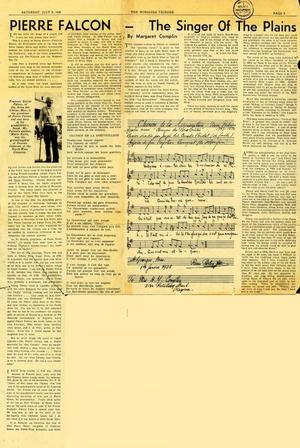- From the Red River Settlement to Manitoba (1812—70)
- Maps
- The Earl of Selkirk: The Colony’s Founder
- An Arduous Task, Marked by a Private War (1812—21)
- The Métis
- Indigenous Peoples
- Colonial Administration
- Maintaining Order and the Colony’s Defence
- Of Fur and Wheat: Subsistence and the Economy
- From Canoes to Railways: Transportation
- Life in Red River
- Missions and Religious Life
- Education, Health, and Social Assistance
- Arts and Culture
- The Press
- Intellectual and Scientific Life
- Winnipeg: The Emergence of an Urban Core
- Debating the Status of the Colony (1850—70)
- The Red River Rebellion and the Creation of Manitoba, 1869—70
- Suggested Readings on the Métis
Arts and Culture

Source: Link
The works of the Métis poet and songwriter Pierre FALCON were sung from coast to coast and sometimes accompanied on the violin – a Métis musical tradition with Scottish and Indigenous roots. They highlight some of the most memorable events in the history of Red River:
“Pierre Falcon, described by his descendants as an excitable and quick-moving man, had a poet’s feeling for words and a musician’s sense of rhythm, and he used them to put local incidents into songs. An armed clash between a party of mounted Métis under Cuthbert Grant* Jr and the Selkirk [Douglas*] settlers under Governor Robert
“The bard’s songs were carried by the voyageurs from the St Lawrence to the Mackenzie, and Lake Falcon in Manitoba was named by them in his honour. His ballads were also sung by the Métis to the accompaniment of the fiddle around prairie camp fires.”
Read the following biographies to learn more about the arts and cultural life in the colony between 1812 and 1870.





